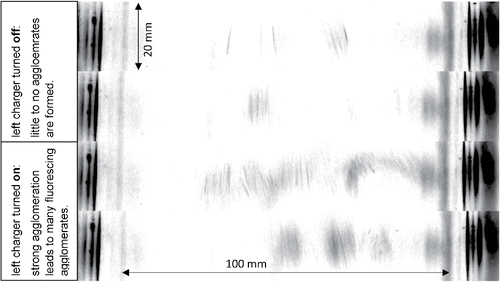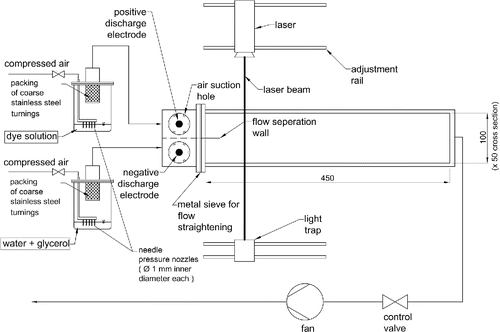Figures & data
Figure 1. (a) Schematic view of two spherical particles barely touching each other, used for estimation of the characteristic diffusion time τdiff. (b) Morphologies illustrate how the mass transfer surface between two agglomerating particles increases, depending on the contact angle θ.

Figure 3. Top view on duct shows four different snapshots of the agglomeration zone at about 80 mm from the end of the flow separation wall with an expanded laser beam. Flow direction is from top to bottom. The two upper images show that there is only little fluorescence due to agglomeration when only one charger is active. The bottom images show that agglomeration is greatly enhanced when both chargers are active. The width of the laser beam in flow direction is 20 mm. The patterns on both sides originate from laser light scattered by the sidewalls of the duct and only designate the duct boundary (see the SI).



